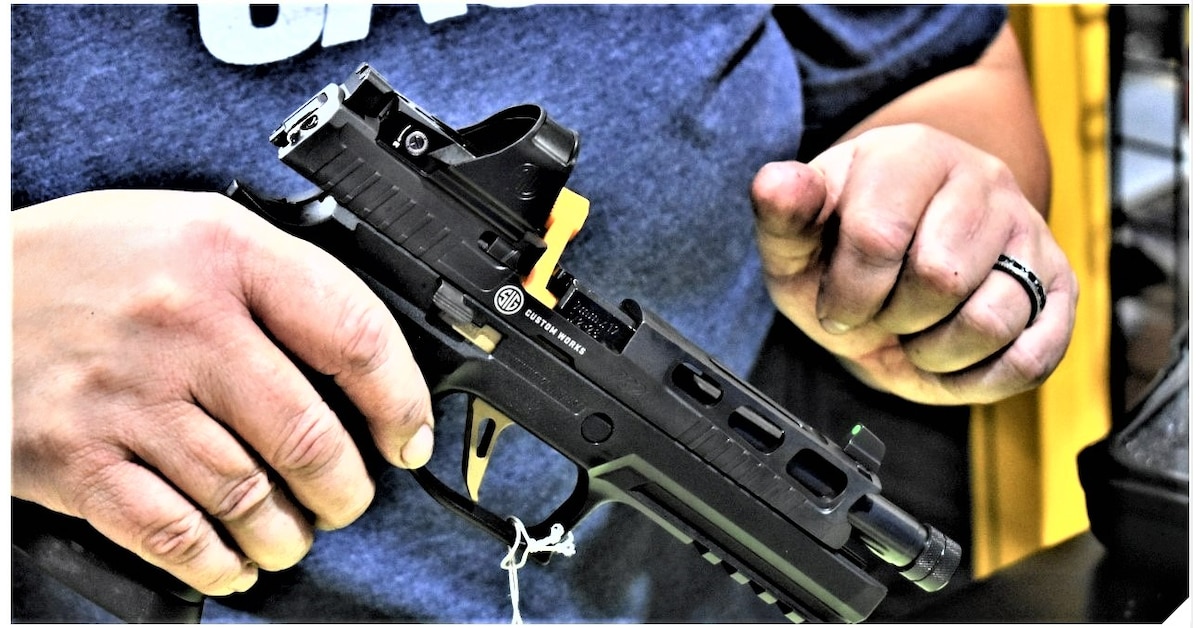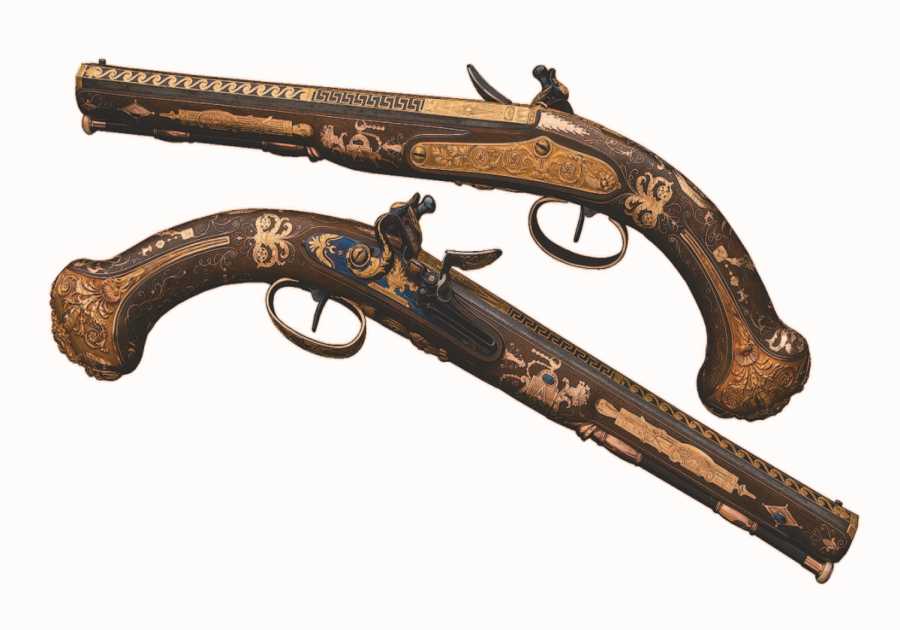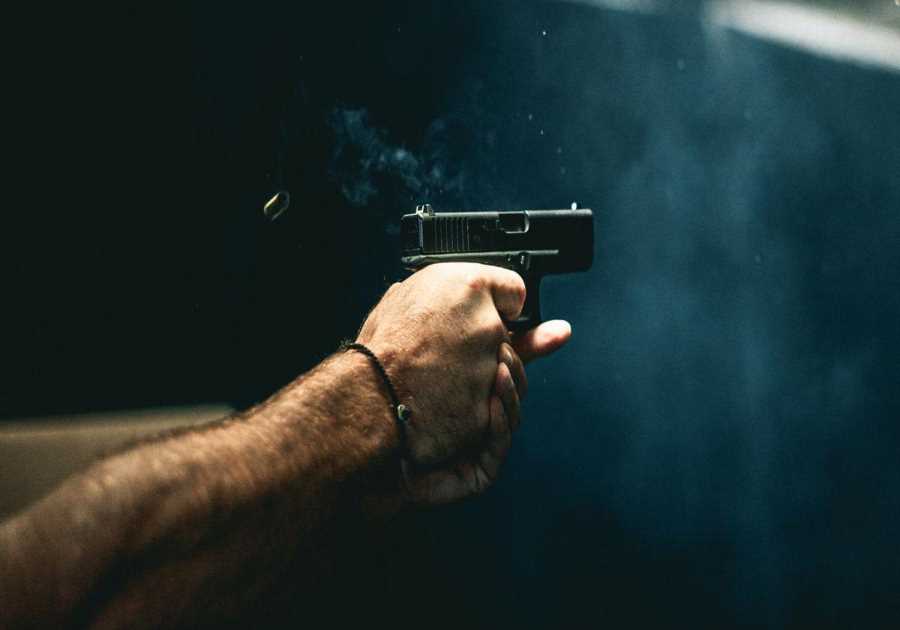
In Guns.com’s ongoing Select Fire series, we talked SIG Sauer into letting us into its expansive and modern facility in Newington, New Hampshire.
While SIG Sauer had its origin in a 1976 team-up of Swiss-based SIG with West Germany’s JP Sauer & Sohn (which itself dates to 1751), by 1985 a US spinoff, SIGARMS, was up and running in Tysons Corner, Virginia. After moving to New Hampshire in 1990, the latter company started domestic production here in America– turning blocks of steel and aluminum into firearms.
And they haven’t looked back.
The company’s first American-made firearm was the P239, a little bit of an underrated classic that was introduced in 1996 and eventually made in .357 SIG, 9mm Para., and 40 S&W. (All photos by Chris Eger/Guns.com)
Rebranding from SIGARMS to SIG Sauer in 2007 and embarking on an aggressive expansion, the American company long ago eclipsed the old German-based concern at Eckernförde, which now is history. Now, pushing some 3,000 employees at no less than 11 locations in three states (New Hampshire, Oregon, and Arkansas), SIG Sauer is about as American as apple pie and bald eagles.
To underline that fact, in recent years, the company has slam-dunked high-profile Pentagon contracts for the Modular Handgun System to supply almost 500,000 assorted M17 other M18 series pistols to all primary branches of the military as well and being selected this year for the Army’s Next Generation Squad Weapon platforms, a showcase military small arms program that stands to be the most sweeping in more than 65 years.
And that doesn’t even mention the consumer market, which saw SIG rewrite the concealed carry rulebook in 2018 with the P365 micro-compact 9mm family– one that has seen just about every other pistol maker switch to a catch-up game in an effort to try to out-P365 the P365 since then and SIG returning fire with updates of their own.
SIG has made (well) over a million P365s since 2018, speaking to the popularity of the little pistol optimized for carry.
Today, the company has gone full circle, and is the only place on the globe where the P210, a pistol developed by SIG in Switzerland in the 1940s, is still produced.
the tour
With all that in mind, we visited SIG’s Newingham, New Hampshire facility where the company has about 150,000 sq. ft. of manufacturing space. Odds are, if you have a SIG-marked firearm that has been made since 2015, it came from inside this building.
Talk about a postcard…
How’s that for a view?
One thing we repeatedly noticed– and we’ve done lots of factory tours– was how neat, clean, and modern the SIG production and warehousing areas were.
If you like guns, you’d love this part of New Hampshire!
A banner program for SIG has been the MHS series of pistols, derived from the P320
And deliveries are still on-going to the military while versions for the consumer market are also being built under the same roof and in the same way.
And of course, the old-school P-series DA/SA hammer-fired guns like this P229 Legion are still in production– who doesn’t like the classics?
As SIG operates its own dedicated optics division, you are increasingly seeing pistols roll out both optics-ready and sometimes optics-equipped.
Speaking of optics-ready, SIG this year announced the P322, its first rimfire pistol in a long time, and it is proving extremely popular.
But of course, SIG is also a big-time rifle and carbine maker including the MCX, MPX and CROSS platforms.
And these M400 Tread Predators
Along with high-speed cool guy stuff like these MCX Suppressed Upper Receiver Group (SURG) systems.
Robots = repeatability
While it may look like robots making robots– SIG has over 200 of them on the floor– these devices are just relegated to repetitive actions that can be done via tight parameters. Now don’t get Luddite about it, nobody is losing a job to a machine, the machines are just tools allowing the employees to expand the plant’s overall productivity. A high-tech extra set of hands, if you want.
This allows the company to keep the same number of folks– in fact, they are always looking for more people who want to work in the 2A industry– and just scale-up production while maintaining quality. In short, SIG’s people set the standard that the robots must meet– every time.
For instance, the company has a bank of robots just churning out P365 slides around the clock:
Taking them from bar stock.
To something that is closer to being…
…More of a slide
In numbers that can start to boggle the mind.
Quality
But this staging for quantity doesn’t mean there aren’t constant checks on quality.
Some of the sections include in-unit QC devices that automatically check for spec and will alert operators on the fly.
Beyond that, there is a constant check and recheck by just about every person that touches a firearm at SIG.
SIG has government inspectors on-site who verify MHS program guns via a multi-stage process and the company tells us they have never kicked back a batch as being unsatisfactory.
And the assembly process is still something easily recognizable from any gun bench as a staple– with attention to detail being key.
They even utilize dedicated automated function-checking machines that go behind the skilled techs on the assembly line to verify scores of metrics when it comes to ensuring the firearms get a go/no-go before they head off for test firing.
Speaking of test firing, SIG wouldn’t let us film in their testing ranges as there is a lot of secret sauce in there but, with a combination of automated sight pushers that set sights on pistols to the thousandths of an inch and the rigorous quality control checks in place, they easily hit some very impressive accuracy standards.
For instance, part of the government contract for the MHS series is to place all 10 shots fired from an M17 at 25 meters inside a 2.85-inch circle, or about the width of a tennis ball. To keep that in perspective, the M9 series it replaced only had to keep 10 rounds on a 9×11-inch sheet– a space larger than that college-ruled paper you used to doodle on.
The circle is the current M17 accuracy standard, while the sheet is the old circa 1985-2017 standard for the M9.
Note that it is not just a final packing area but rather a “Final inspection & packing” area as the pistols that head through this last stage of the process get checked out at least twice more before heading to shipping.
If you are curious in terms of numbers, according to 2020 statistics from federal regulators, SIG’s New Hampshire facility cranked out no less than 1,017,440 pistols and 58,879 rifles in that year alone.
You can be sure that this powerhouse doesn’t plan on slowing down any time soon.
Did you miss our previous article...
https://galleryforgreatguns.com/modern-sporting-rifles/bodycam-footage-shows-shootout-with-reno-police-at-apartment

































